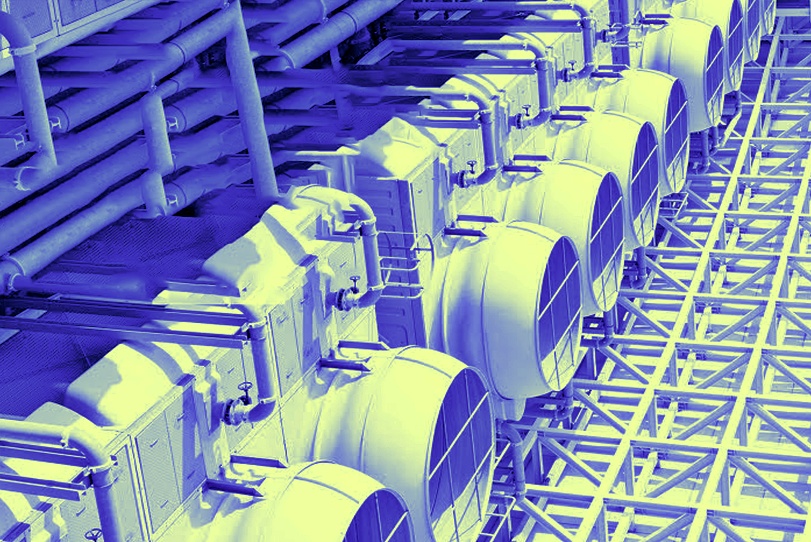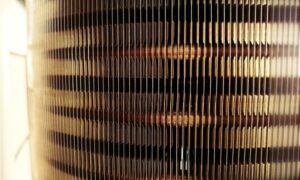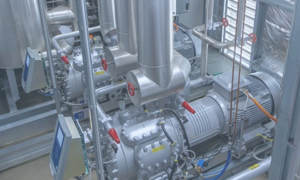Leading air conditioning and VRF system experts discuss the insistence towards energy efficient air-conditioning, and the demand for VRF system and technologies.
The Indian air-conditioning market is estimated to be around 7 to 7.5 million units per annum with ₹15,000 Cr of which, around 6 percent are from the VRF segment. The VRF market contributes to 9 percent of the global market and is poised to create a valuation of USD 29,478.1 million by 2026, registering an 11.0 percent CAGR during the forecast period (2020–2026).
VRF systems are known for their superior energy efficiency and ability to offer a quick return on investment (ROI) in many applications. Rise in urbanisation and industrialisation, alongside advances in VRF systems and HVAC technologies; fuel the growth of the market. Similarly, rising construction activities and the development of energy-efficient technologies and products drive the growth of the market.
Things to consider while designing a VRF system
According to Vikram Murthy, Director, Univac Environment Systems Pvt. Ltd., “One of the most important aspects of designing a VRF system is that you must let it being able to be maintained by designing the indoor and outdoor units in a way where the maintenance is uncritical. VRF systems are well engineered and are great maintenance indicators, and one should identify if your systems requires troubleshooting after the data indicates error in the system. So, we need ensuring of no leaks in the system and that its clean, and performing regular maintenance is imperative.”
The other important factor about a VRF system is, whether or not in use, the system continues to work fine even without regular maintenance. To be more precise, maintaining cleanliness and space and providing ample space around the systems can enhance the performance and life shell, the VRF system will work fine.
Deepu Manuel, Product Head – VRF, Lining Environment Division, Mitsubishi Electric Pvt. Ltd explains the design key designing aspects for modern buildings. According to him, installing VRF systems for modern buildings and commercial buildings can have more individualised controls but it retains all the aspects of centralised air-conditioning systems. An individual can control its own comfort, it can maintain the quality of the air, fresh air ventilation, and can be interlinked with air conditioning and its most important aspects, and aesthetics. Practically, many times the aesthetic takes precedence over the design aspects. People want certain kinds of air conditioning units which studies the interiors. “An intelligent system enough to keep on adjusting to the feedback loop and senses what happens when our ambient conditions external parameters are not constant it keeps on changing same with the internal conditions the system is continuously adjusting to the needs and requirements of the users. So, the perceived temperature or perceived comfort of same temperature keeps varying. So, this kind of individual control of temperature and partially humidity is also possible with the VRF Systems,” Deepu adds.
According to Abhinav Gupta, CEO, and Co-founder, ActiveBuildings, “VRF definitely proved in the last decade that it is the most efficient way of cooling. It gives a design freedom to the architects, system designers to have a floor-to-floor design for a building where you need to allocate a small segment for major cooling and rest of it can be adjusted to its adjacent cooling. This is where a designer comes into the picture, as he looks at the ways to cool, add adequate ventilation to the space and charts a plan to manage both of them subsequently. He also considers the energy saving aspect whilst maintaining a cool ambience.” The designer will then adopt the suitable technologies to his system which is energy efficient, and reliable to obtain clean air in the building.’
Advanced R&D in VRF technology to mitigate the climate change
VRF systems and technology have been accepted in almost all kinds of applications. In addition to this in the last two decades, adoption of various developments including sensors and other technologies in the VRF field is more than in the other fields, so combining all these aspects. Noting the same, Deepu says, “We can say we have already gained the initial momentum and have already reached to a level where we see more companies entering and investing in the R&D to fasten the technological developments in the VRF systems.” And today, customers are largely adopting VRF systems, so, when the market accepts it, people will invest more in it; this will further open pathways for the newer technologies. This combination will surely benefit the customers of VRF systems.
Here, Abhinav talks about decoupling of ventilation and cooling. So, you have VRF Systems which use refrigerants to cool the air and efficiently achieves ambient temperature indoors. However, what it cannot do with the refrigerant and the cassettes is it cannot provide fresh air into the system; so, to provide the fresh air, we have OEMs that provide dedicated outdoor air systems that keep generating fresh air and pumps them into the facility via its ducted units. But these systems have certain conduits inside, that can bring the temperature down to a room neutral temperature and therefore, it does not create an extensive load for cooling when eventually supplied to the VRF Systems. Abhinav further says “Here, a smart DOS system with an efficient cooling can bring down the co2 levels into in high occupancy areas, and using DOS systems can also give you a better control over humidity.”
Advantages of VRF technology and systems
One of the key advantages is, the air conditioning can be done floor by floor depending on how you plan it and how you do you’re circuiting, explains Vikram. He further adds, “VRF system is now ubiquitous that means it is present everywhere you go. They are emerging as the preferred choice around the world. Previously, its inception was considered only for a particular type of buildings or the applications being offered; whereas today almost every building and most of the air conditioning systems has VRF technology.”
“Most of the parts of VRF systems are factory assembled in a controlled environment where you have only the piping between the indoor and outdoor unit, and the condensing unit and evaporator is mostly field driven,” explain Deepu. So, we have completely assembled a system which can work as per the design, with a minimum variation and an available control system will further allow us to predefine and add many sensors and feedback the loop into the systems which in return works perfectly as expected.
For example, if we add an external sensor procured from the market and try to link it to the feedback system and the new system to adjust; then the quality feedback so many things of that sensor maybe vary. “So, when you have a completely controlled and environment manufactured systems, adoption of new sensors and new technologies and other things are much faster. Because, the results of what we plan at the R&D stage or the factory stage, will be available at the customer site,” add Deepu. This gives a satisfaction to the customer for being able to enjoy the end results as promised by the provider. This is one of the other reasons for quick adoption of VRF systems by the customers.
Efficiency and reliability of VRF systems v/s chillers
The very important about VRF is, you can scale it up to 3000 to 4000 tons and create huge systems of it. But at the end of the day, attending the large number of outdoor units or maintenance would be a challenge. For instance, big companies like Reliance or TCS have very large manufacturing and commercial facilities, where they use both chillers and VRF systems in a divisive manner. It depends on the application type of way of doing things. “So, if there is a system operator, who is renting out facilities and commercial spaces, he would prefer to have a chiller system because of his energy efficiency in managing it. We must understand that chiller have very high energy efficiency and the distributed effects of chillers with water is certainly very good. Further, it depends on who is using the system and who is delivering the cooling,” say Vikram. So, central plants are preferred by large facilities like malls, hospitals, hotels or large commercial buildings which are operated by somebody. In such cases, chiller offers a central way of managing things, even the air handling unit on the floor is much easier to manage than many of the indoor units. Basically, its application and who is operating will decide the choice of system.
Energy efficient systems are the way forward Government of India’s India Cooling Action Plan (ICAP) educates us with various ways to bring down the consumption of energy and increase the energy efficiency in different types of systems. ICAP will rather increase efficiency very significantly by minimising the global warming conditions, by phasing out frequent leakages in the refrigerant. Further, regular maintenance and adequate O&M activities to maintain efficient functioning in your VRF systems.
Cookie Consent
We use cookies to personalize your experience. By continuing to visit this website you agree to our Terms & Conditions, Privacy Policy and Cookie Policy.















